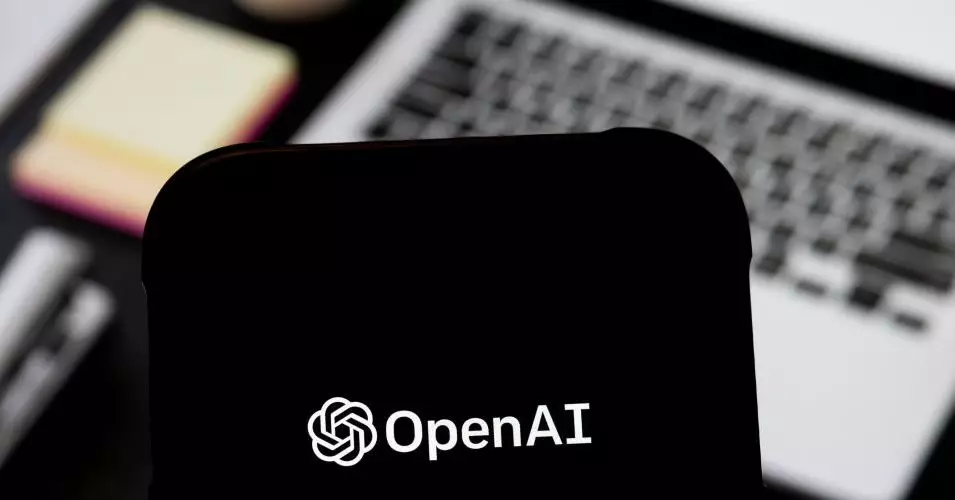In an audacious move that may redefine the boundaries of artificial intelligence, Sam Altman, the CEO of OpenAI, has announced the impending release of a powerful open-weight language model. This bold decision comes on the heels of significant pressure from competitors like DeepSeek, whose R1 model has quickly become a favorite in the AI ecosystem, as well as Meta’s Llama models. Altman emphasized the urgency of this transition, revealing on X, “It feels important to do,” indicating a critical reassessment of OpenAI’s approach to model accessibility and competition.
This announcement marks a pivotal moment in the evolution of AI, particularly in how organizations deploy their resources and intellectual property. OpenAI, once at the forefront of withholding its models for concerns over safety and ethical implications, is now navigating the need for transparency in a landscape increasingly populated with open-source alternatives. The competitive vacuum created by DeepSeek’s effectiveness—purportedly trained at a fraction of the cost—has highlighted OpenAI’s potential misstep in maintaining a closed model system.
Benefits of Open-Weight Models
The advantages of open-weight AI models cannot be understated. At its core, an open-weight model allows users to download, modify, and run AI algorithms on their hardware, drastically reducing costs and increasing accessibility. This democratization of technology enables smaller developers and startups to harness the power of sophisticated AI without the need for exorbitant cloud computing resources. HuggingFace’s co-founder, Clement Delangue, celebrated this shift, recognizing the “power of open weights” as a monumental step toward fostering innovation.
Furthermore, open-weight models possess the inherent advantage of adaptability to specific needs. Companies developing applications that require the processing of sensitive or confidential information can customize these models, ensuring both efficacy and compliance with necessary privacy protocols. This flexibility not only improves user experience but also cultivates trust—a critical ingredient in today’s data-dependent environment.
The Cautionary Tale of Open Access
Despite the myriad benefits, the announcement also prompts a discourse around the potential hazards associated with open-weight models. While Altman has indicated that OpenAI will undertake rigorous testing to mitigate risks, the reality remains that unrestricted access to advanced AI tools can be misused. With the shadow of criminal endeavors—ranging from cyberattacks to the development of biological weapons—looming large, the industry’s ethical obligations come under scrutiny. Steven Heidel, a member of the OpenAI technical staff, reasserted the need for caution, stating that the company won’t release models believed to pose “catastrophic risks.”
This juxtaposition of opportunity and risk will define the narrative around open-weight models. Researchers within the field are understandably apprehensive, as swift technological advancements can outpace regulatory measures. The inadvertent facilitation of dangerous activities through easy access to potent tools could evoke significant backlash against the very notion of open AI.
A Call for Meaningful Transparency
As OpenAI embarks on this journey to democratize AI, it faces the challenge of fostering genuine transparency without compromising proprietary advantage or safety. Meta’s approach to open-weight models like Llama has recently been critiqued for its lack of thorough disclosure regarding training data and other critical parameters. Such opacity barely scratches the surface of meaningful openness, and there is an inherent risk that similar practices could become contagious.
Altman’s assurance of hosting events for developers indicates a proactive attempt to engage with the community and cultivate insights about the deployment of these models. However, the industry must strive not just for participation but for an environment that fosters ethical AI development. OpenAI, alongside others in the sector, has the responsibility to establish guidelines that not only protect intellectual property but also empower developers to use technology wisely and for the greater good.
In a landscape where the rapid evolution of AI continues unfettered, the decision to release an open-weight model signifies not just a strategic maneuver but a potential revolution in how we conceptualize AI’s role in society. It exemplifies the tantalizing possibilities of innovation while reminding us that vigilance is paramount to ensure that the power of these tools is harnessed for beneficial outcomes.

